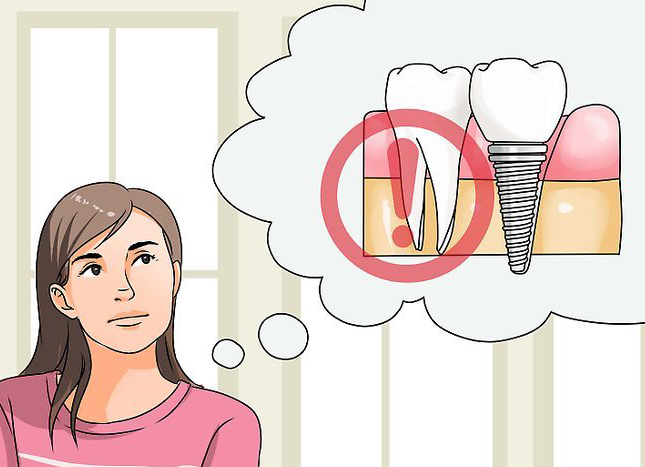Home/Articles
/ Periodontology /
Reena’s Notes: Placing Implants in your Periodontally Susceptible Patients with Dr Rajiv Patel
June 21, 2021

Are your periodontally susceptible patients more likely to have problems around their implants?
Short answer:
- Yes
Evidence:
- Patients with deep pockets >5 mm have a greater risk of developing peri-implantitis (Pjetursson et al 2012).
- Patients with a history of periodontitis, over a long-term show: greater probing depths around implants, greater bone loss around implants, a higher incidence of peri-implantitis (Sgolastra et al 2015) and higher overall failure rates (Koldsland et al 2009).
- Implants placed in periodontally susceptible patients have shown to have significantly higher amounts of bone loss compared to periodontally healthy patients irrespective of the implant type chosen (Matarasso et al 2010).
- Aggressive periodontitis patients have a 5 times greater risk for implant failure and 14 times greater risk for peri-implantitis (Swierkot et al 2012).
Key learning point:
- Treat the periodontitis first and aim to eliminate any deep pocketing prior to implant placement. Warn patients with a history of periodontitis that they are at a higher risk of complications.
Which is the better option, periodontally compromised teeth or implants?
Short answer:
- There is a place for both but we should aim to maximise the lifespan of the natural teeth before implant placement to maximise the time the patient has a fixed dentition.
Evidence:
- In a study following periodontal patients over 30 years of maintenance, very few teeth were lost. Most teeth were lost due to endodontic complications (Axelsson et al 2004).
- Upper molars are the most commonly lost teeth. But most teeth are lost in a small number of patients and upper molars with furcation defects show a 70% survival rate at 22 years (Hirschfeld and Wasserman 1978).
- 701 root resected molars were compared with 1472 implants in molar sites over 15 years. Cumulative success rates were identical (Fugazzotto 2001).
- At 11 years, natural teeth (root treated with or without cast post and core) had less biological or technical complications when compared to implants (Schmidlin et al 2010).
- When treating molars with class I furcation involvement, simple periodontal treatment of scaling and root planing was more effective and cost less than single implant crown (Beikler and Flemming 2015).
Key learning point:
- Compromised teeth, when well looked after, may last a long time. The approach for multiple prevention extractions and implant placement based on the assumption that implants will outperform teeth should be followed with extreme caution.
How important is supportive therapy in our implant patients?
Short answer:
- Very important
Evidence:
- Supportive therapy consists of professional plaque control and selective subgingival scaling at sites showing clinical signs of inflammation during recall visits. The purpose of this treatment is to maintain peri-implant health (Lang and Tonetti 2003).
- Recall intervals should be tailored according to previous periodontal therapy, location of the soft tissues, implant location and prosthesis design.
- Longitudinal studies have shown that a lack of supportive therapy is associated with a higher frequency of peri-implantitis (Rocuzzo et al 2010, 2012, 2014).
- Lack of supportive therapy in patients diagnosed with peri-implant mucositits was associated with an increased risk for development of peri-implantitis. After 5 years, approximately 1 in 5 patients with peri-implant mucositis who were compliant to supportive therapy developed peri-implantitis; 1 in 2 who were non-compliant developed peri-implantitis (Costa et al 2012).
Key learning point:
- Supportive therapy has an important role to play in improving the chance of long-term success in our implant patients. We must educate patients to consider long term supportive therapy as part of their implant treatment, beyond implant placement and delivery of the restoration.
Will implant position and prosthesis design make a significant difference to long-term success?
Short answer:
- Yes
Evidence:
- Implants positioned too close together may impair access for adequate plaque control. Aim to maintain 3 mm spacing between implants.
- Loss of hard and soft tissues may result in an inability to place an implant in the correct 3D position. Incorrect bucco-lingual implant placement can result in restorations with large uncleansable overhangs. Deep placement may create deep pockets and a large subgingival environment impairing proper plaque control. It is important to be aware of the complications from the outset. Grafting may be a consideration.
- Take care if using cemented restorations due to the risk of the extrusion of excess cement into the peri-implant sulcus when seating the restoration. The amount of excess cement is generally greater with deeper the crown margins (Linkevicius 2013). Excess cement may act as a foreign body and provoke an inflammatory response that results in peri-implantitis. Cement remnants may provide a rough surface for microorganisms to colonise leading to peri-implant mucositis and possibly peri-implantitis. Screw retained restorations may be preferable where possible.
- It may not always be necessary to provide a fixed restoration. Overdentures are often a more cleansable and safer long term solution for some patients. A removable prosthesis replaces both hard and soft tissue to provide a better aesthetic outcome and allows better access to peri-implant tissues for plaque control.
Key learning point:
- Plan your implant position and prosthesis design well, keeping in mind ease of self-performed plaque control.
Summary
- Patient/case selection is critical. Consider periodontally susceptible patients for implants when they can maintain good plaque control and are willing to have long term supportive therapy.
- Ensure the periodontal tissues are as healthy as possible before you start.
- Plan implant placement and prosthesis design with long-term maintenance and cleansibility in mind.
- It may not always be possible to achieve ideal outcomes. Manage patient expectations and be prepared to accept some compromise.
- Be honest with your patients. Implants are likely to have a finite lifespan. Further treatment is likely to.
These notes were derived from a webinar produced by the British Society of Periodontology. Further resources can be found at: www.bsperio.org.uk.



